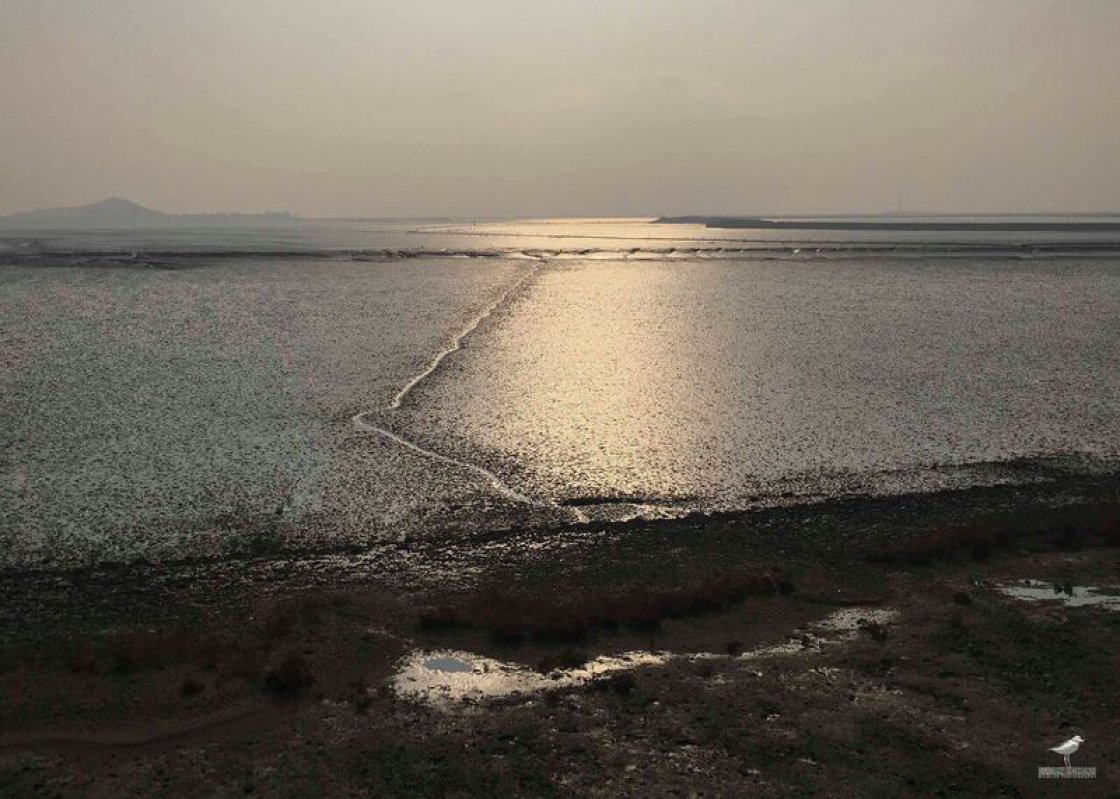You are here
Stopping habitat loss: China proposes Yellow Sea to be added to the World Heritage Tentative List

Bonn/Incheon – 21 April 2017 - Habitat loss is one of the main triggers for the extinction of migratory birds and a main topic for this year’s World Migratory Bird Day. Now, the Yellow Sea of China and the Bohai Gulf, known for rapid destruction of natural habitats, have finally regained some hope with regard to preserving their valuable wetlands. Those areas were recently added to the World Heritage Tentative List, which means a significant step towards recognition and protection.
The extensive mudflats, sandflats and associated habitats of the Yellow Sea, including the Bohai Gulf, represent one of the largest areas of intertidal wetlands on the planet. It is the most important staging area for migratory waterbirds in the East Asian-Australasian Flyway (EAAF), the greatest one of all.
This is good news for two of our WMBD ambassadors: The Red Knot and the Spoon-billed Sandpiper. Red Knots, of the rogersi and piersmai subspecies, also stop over at the mudflats, with up to 60 per cent of the global population using another of the tentative list sites, the Luannan wetlands of the Bohai Gulf. While the critically endangered Spoon-billed Sandpiper, with a global population of less than 1,000 birds, is vitally dependent on the mudflats of the southern Jiangsu coast, especially during their autumn migration.
But not only migratory birds depend on the stability of this ecosystem, it is also an indicator of the vital ecosystem services provided by the Yellow Sea, including tourism, fisheries, disaster risk reduction and climate change resilience. About 200 million people live in the coastal area, where many rely on the regional economy. All those concerns led to a call for recognizing the emergency for the conservation and management of the intertidal wetlands of the Yellow Sea, including the Bohai Gulf.
A remarkable parallel to the Yellow Sea already exists in the East Atlantic Flyway, where the tidal flats of the Wadden Sea, extending along the North Sea coasts of Denmark, Germany and the Netherlands, also serve as a vital stopover site for migratory waterbirds. This area is already a trilateral transboundary UNESCO World Heritage Site, indeed the first ever transboundary World Heritage Site comprising an intertidal area and one of only two such World Heritage Sites worldwide. The second area of this kind is the Banc d’Arguin in Mauritania, which is also located on the East Atlantic Flyway.
Intertidal mudflats are unique and fascinating ecosystems that deserve protection in their own right. However, as in the case of the Wadden Sea, which obtained the World Heritage status in 2009, the significance of the intertidal mudflats of the Yellow Sea extends far beyond the limits of the area itself. As a key staging area for migratory birds along the East Asian Australasian Flyway they are critically important for biodiversity on a global scale. CWSS therefore welcomes the initiative to inscribe this site on the UNESCO World Heritage List and we hope that it will contribute to reconciling nature potection and regional development in this vital and vulnerable area.
- Rüdiger Strempel, Executive Secretary of CWSS
With these proposed nominations by China and the Republic of Korea, the coastal wetlands of the Yellow Sea are increasingly recognized for their outstanding global importance and hopefully this will result in stronger protection and management for the continued survival of migratory waterbirds.
Photo: Eugene Cheah
